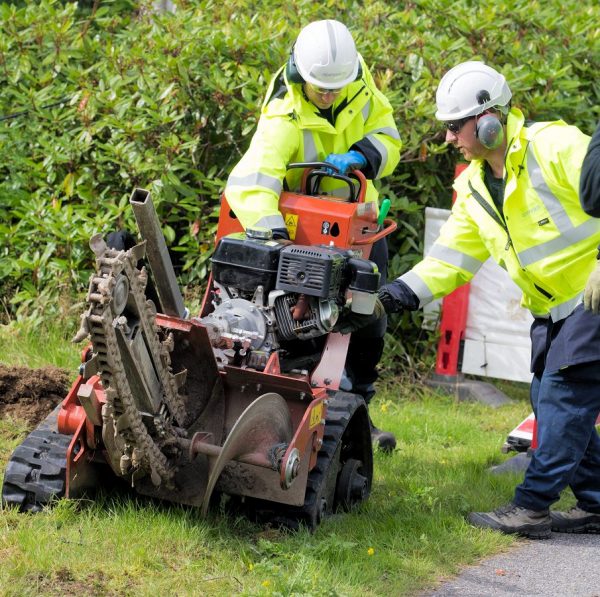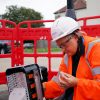Public Funding Links 1,084 UK Schools to Full Fibre Broadband

The UK Government has today revealed that 1,084 schools in rural areas have now been connected to a gigabit-capable “full fibre” network as a result of the investment they started in 2019, which is continuing under their new £5bn Project Gigabit scheme. A further 884 schools are planned to be connected by March 2022.
The original Local Full Fibre Networks (LFFN) programme started in 2019 and included an initial commitment, among other things, to connect more than 100 primary schools in rural parts of England (here). The work was supported by various ISPs and network operators, such as Openreach (BT), KCOM, Wessex Internet and others, and ultimately attracted funding of £210m (£180m from LFFN and £31.1m via the Rural Gigabit Connectivity programme).
All of those initial deployments were focused on communities that were not currently in any commercial roll-out plans for a Fibre-to-the-Premises (FTTP) broadband network. One advantage of this anchor tenancy style approach is that the same infrastructure could later be harnessed to help extend FTTP into the surrounding communities (homes and businesses), albeit requiring support from additional private investment.
Advertisement
Indeed, the government claims that around “1.5 million more homes and businesses” are now within 200 metres of a fibre optic broadband cable thanks to the aforementioned public investment (200 metres is NOT the same as premises passed, since the fibre is not just outside your home). But it’s unclear precisely how many of those premises have actually been passed by a new FTTP network as a result of the fibre build to schools.
The same LFFN programme has also been taking a similar approach with other public sector sites, such as council buildings, hospitals, GP surgeries, fire stations, leisure centres, museums and libraries. Overall, that phase is currently “on track” to connect around 6,800 public buildings across England, Scotland, Wales and Northern Ireland by the end of March 2022.
Nadine Dorries, UK Digital Secretary, said:
“We are levelling up pupils’ and teachers’ access to the fastest future-proofed broadband, giving hundreds of schools better access to important learning opportunities, no matter where they live.”
As previously mentioned, the new Project Gigabit programme set aside another £110m to help continue the work that LFFN started several years ago. Separately, the government is also supporting technology upgrades in classrooms, improving education for pupils and enabling school staff to work better by investing £30m in the pilot “Connect the Classroom” project. This aims to upgrade technology within over 1,000 schools, allowing them to benefit from faster Wi-Fi and cloud services.
Alongside today’s announcement, the government said they would publish a report exploring the early and expected benefits of gigabit connections for schools (this was not online at the time of writing), which is said to be based on a survey of 261 schools connected under the government’s RGC scheme.
Advertisement
Summary of the Gigabit Benefits to School
— Time saving across the whole school including teachers, office staff and pupils
— Increased confidence and creativity in the classroom – for planning and using technology in lessons
— Improved pupil experience and opportunity
— Staff satisfaction and reduced frustration due to lags and slow speeds
Mark is a professional technology writer, IT consultant and computer engineer from Dorset (England), he also founded ISPreview in 1999 and enjoys analysing the latest telecoms and broadband developments. Find me on X (Twitter), Mastodon, Facebook, BlueSky, Threads.net and Linkedin.
« Virgin Media O2 UK Conducts Third 2.2Gbps Broadband Trial
Gov Consults on UK’s Future Wireless Spectrum and 6G Needs »























































Although relatively small in numbers, those on the not-for-profit B4RN community fibre network have connected primary schools (and churches etc) too with free services. E.g. Crossthwait in Cumbria has a 10 Gbps feed although some “only” have a full symmetric 1 Gbps service such as Shamley Green Primary School in Surrey.
Brsk are offering free gigabit fibre service all schools and community centres our network passes as we roll out.
2020 showed the school our kids go to that you can’t get away with your little 10mbit line any more.
They won’t fork out for a better one. So we get teachers on Zoom saying ” e l o child en to l ” … as you can see it’s pointless having a lesson like that.
All schools should get fibred up as a priority.
Completely zany.
If they prioritised voice and depriortized video then it should work.
But I do agree that schools are a usage case where symmetric makes sense.
ATM I would have thought a primary would need 300/300 and a secondary 1000/1000 – at a guess.
10mb/s will never work as it is almost certainly ADSL with 1mb/s upstream.
It would be interesting to know precisely what form the backhaul handoff takes?
Are you stuck with a OR/BBT headend?
Or is it just dumb fibre?
Or does it vary?
Is there a central register or does it depend on local knowledge?
How do others access the termination point if it is in a school?
How long is the comment ‘the same infrastructure could later be harnessed to help extend FTTP into the surrounding communities (homes and businesses)’ Going to be trotted out.
I’ve no problem with connecting education, medical and social use (libraries) etc under government funded or subsidy schemes but are any of them actually benefitting residential and businesses.
I doubt it makes any meaningful impact whatsoever on the decisions to fibre or not a particular area and if it did the deployment wont stray far from the densest concentration.
How many more schools would have been connected had the implementation of full-fibre village pumps been left to local authorities in 2010, instead of being centralised under a department with no experience of procurement under EU state rules advised by contactors with equally little experience